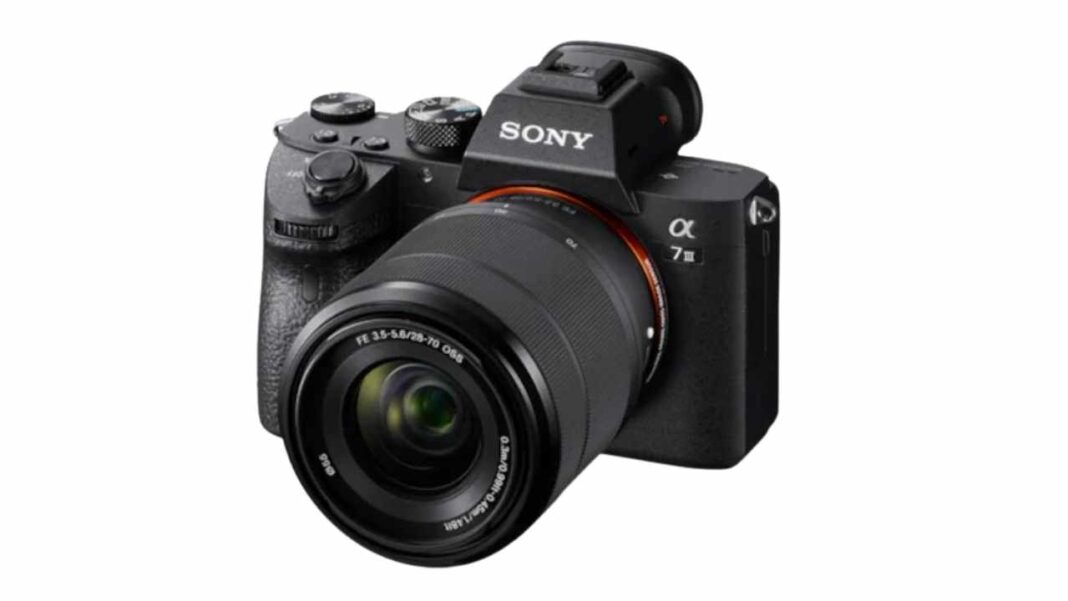Introduction to the Sony Alpha 7 III
The Sony ILCE-7M3K, more commonly known as the Sony Alpha 7 III or A7 III, represents a significant milestone in the evolution of full-frame mirrorless cameras. Released as the third generation of Sony’s popular Alpha 7 series, this 24.2-megapixel camera has earned its reputation as one of the most versatile and capable full-frame cameras on the market. The “K” designation indicates that this model comes as a kit, typically bundled with the FE 28-70mm f/3.5-5.6 OSS lens, making it an attractive package for both enthusiasts upgrading from crop-sensor cameras and professionals seeking a reliable workhorse camera.
Image Quality and Sensor Performance
At the heart of the Sony A7 III lies a newly developed 24.2-megapixel back-illuminated Exmor R CMOS sensor. This resolution strikes an excellent balance between detail capture and low-light performance, making it suitable for a wide range of photography genres. The back-illuminated design allows for improved light gathering capability, resulting in exceptional image quality even in challenging lighting conditions. The camera boasts an impressive native ISO range of 100-51200, which can be expanded to ISO 50-204800, providing photographers with tremendous flexibility when shooting in various environments.
The sensor works in conjunction with Sony’s powerful BIONZ X image processor, which delivers fast performance and excellent noise reduction. Images produced by the A7 III exhibit rich colors, impressive dynamic range of approximately 15 stops, and remarkable detail retention. The 14-bit RAW files provide ample latitude for post-processing, allowing photographers to recover highlights and lift shadows without introducing excessive noise or artifacts. This combination of sensor and processor makes the A7 III equally adept at landscape photography, where detail and dynamic range are paramount, and event photography, where high ISO performance becomes critical.
Autofocus System and Performance
One of the most impressive features of the Sony A7 III is its advanced autofocus system, which represents a substantial upgrade over its predecessor. The camera features 693 phase-detection AF points covering approximately 93% of the frame, combined with 425 contrast-detection points. This hybrid autofocus system is borrowed from Sony’s flagship A9 model and provides exceptional tracking performance and accuracy. The wide coverage ensures that subjects can be tracked across nearly the entire frame, making it easier to compose shots without worrying about AF point limitations.
The A7 III’s Eye AF technology deserves special mention, as it represents a game-changing feature for portrait and wedding photographers. The system can detect and track human eyes with remarkable precision, maintaining sharp focus even as subjects move or turn their heads. This feature works in both still photography and video recording modes, significantly improving the hit rate for perfectly focused portraits. The camera also offers improved performance in low-light situations, with the AF system rated to work down to -3 EV, allowing for confident focusing even in dimly lit environments.
Video Capabilities
Beyond its still photography prowess, the Sony A7 III is an exceptionally capable video camera, making it a favorite among hybrid shooters and videographers. The camera can record 4K video at up to 30 frames per second using the full width of the sensor, ensuring no crop factor is applied. This full-frame 4K recording provides a cinematic look with excellent depth of field control. The camera also supports Full HD recording at up to 120 frames per second, enabling smooth slow-motion footage.
Video quality from the A7 III is outstanding, with the same 14-bit RAW processing being applied to video capture. The camera supports various picture profiles, including the highly regarded S-Log2 and S-Log3 gamma curves, which preserve maximum dynamic range for color grading in post-production. Hybrid Log-Gamma (HLG) support allows for direct recording of HDR content. The inclusion of clean HDMI output and headphone/microphone jacks makes the A7 III a professional video tool, while features like focus peaking, zebra patterns, and customizable display options provide videographers with the tools they need for precise monitoring.
Build Quality and Ergonomics
The Sony A7 III features a robust magnesium alloy body construction with extensive weather sealing, making it suitable for professional use in various environmental conditions. The camera feels solid in hand while remaining relatively compact and lightweight compared to traditional DSLR systems. The improved grip design provides better handling than previous Alpha 7 models, making it more comfortable to use with larger lenses for extended periods.
The camera’s control layout is well thought out, with dual control dials, a multi-selector joystick for AF point selection, and numerous customizable buttons. The rear 3-inch tilting touchscreen LCD with 921,600 dots provides a clear view for composition and menu navigation, while the improved 2.36-million-dot OLED electronic viewfinder offers an excellent shooting experience with minimal lag. Battery life has seen a dramatic improvement over previous models, with the new NP-FZ100 battery rated for approximately 710 shots per charge, eliminating one of the major complaints about earlier Alpha 7 cameras.
Conclusion
The Sony ILCE-7M3K represents an exceptional value proposition in the full-frame camera market. It successfully combines high-resolution imaging, professional-grade autofocus, impressive video capabilities, and robust build quality into a relatively compact and affordable package. Whether you’re a professional photographer, an advanced enthusiast, or a hybrid shooter requiring both excellent stills and video performance, the A7 III delivers performance that rivals cameras costing significantly more. Its versatility, reliability, and image quality have rightfully earned it recognition as one of the best all-around full-frame cameras available, making it an outstanding choice for anyone seeking to invest in a capable and future-proof camera system.

